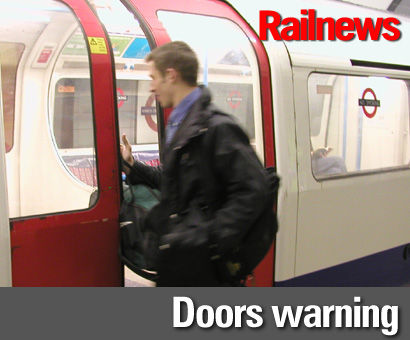A NEW report into the safety of passengers entering and leaving trains says that too many passengers are willing to take risks by trying to board a train while the doors are closing.
A total of 1,515 incidents at the platform edge were reported in 2015-6, but not all of these involved problems while passengers were boarding or alighting from trains.
The rail safety body RSSB has also repeated that no additional risks are posed when trains are operated only by a driver, with no second staff member on board.
Research has shown that nearly three quarters of passengers will still try to get on a train once the door alarm starts to sound, with over half still intent on boarding just before the doors start to close.
Two out of three passengers interviewed for the RSSB study failed to interpret the door close alarm as meaning ‘stand back’, with most people disregarding it and continuing to board.
Many people, some 16 per cent of passengers, take the risk of still trying to board when the doors are actually closing in front of them.
The majority of passengers also reportedly believe that train doors are like lift doors, and will always reopen if something obstructs them,
Although train travel is statistically very safe – far safer than travelling by road – in the worst cases passengers have suffered major injuries after being trapped in the doors and then dragged by a departing train.
Some examples of such accidents in recent years have included London King’s Cross in 2011, Jarrow in 2012, Newcastle Central in 2013, West Wickham in 2015 and, later in the same year, Hayes & Harlington.
The research has also revealed that different types of trains and doors are factors, and that some take longer than others to close. Enhanced audible messages, timings of warnings and alarm types can help reduce the risk, said the RSSB.
RSSB’s lead human factors specialist Paul Leach said: “Train travel is really safe, but it’s vital that passengers aren’t tempted to make a dash for the doors, no matter how rushed they are. The best way to avoid the risk of a nasty accident is to keep back from the edge and not try to get on or off once the door alarm starts to sound.”
“At the same time, rail companies will want to do everything they can to make passengers safe. That includes managing the risk when trains leave stations and fully learning from incidents when they do occur. Network Rail, operators and other rail bodies are working closely with us on these issues.”
Meanwhile, RMT general secretary Mick Cash responded: “This research reinforces the growing dangers to passengers at the platform, train interface on Britain's overcrowded railways and underlines why RMT is fighting attempts to remove guards and station staff in the drive for increased profits.
“Trap and drag incidents are a clear and present danger as this study highlights and the safety body should stop propping up the train companies and the government and start supporting front line rail staff.”


